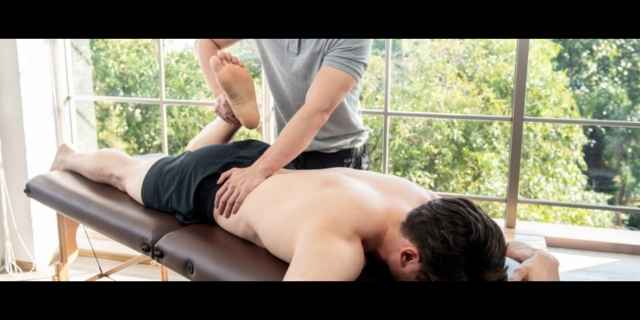Rugby is a sport that can be played well into middle age at amateur club level. It is common to see club teams with players in their 30s, 40s, 50s, and beyond!
However, it’s true that many older rugby players started playing in their school days. But what if you want to take up rugby for the first time in your 40s? Can it be done?
Yes, you certainly can! But there are a few things to keep in mind – read on to learn more.
Conditioning Before You Start Playing
There is an old saying, “You get fit to play rugby, you don’t play rugby to get fit.” Nowhere is this more true than for the older player.
We advise you to talk to a trainer at your gym about a conditioning program some months before the rugby season starts.
You absolutely must train, both for the aerobic demands of the game, but also for the impacts. Rugby is a collision sport and you need to be ready for it.
A fit, flexible body can take the hits without injury. You can also keep up with the demands of the running that rugby requires.
Strength Training For Rugby

Strength training is an absolute must for rugby, and this is not just for the big players up front.
Strength allows a player to push hard and dominate, but it also protects the player from injury.
Strong quads protect the knees, and a strong core protects the spine. Strong muscles help hold the joints in place during a collision.
This means that even the speedy little players on the outside need to lift weights so that they are resilient when tackled.
An older player can’t train in the weight room like the younger players can, or at least not as often. Since it takes longer for older bodies to recover, training time needs to be maximized.
Remember, all the growth happens during rest, not during the lifting!
The focus here should be on relatively low sets of multi-joint exercises a few times a week. Older lifters need to warm-up well before any work sets!
Multi-joint exercises that give you the most bang for your buck include
- squats
- deadlifts
- trap bar deadlifts
- bench press
- military press
Again, you should talk to a pro in your gym. Or check with the club you’re looking to join – they may have discounts for a trainer.
We have an article about how much professional rugby players lift. It’s an interesting read, but these numbers aren’t meant for you!
Flexibility For Older Rugby Players

As an older player, you will be spending more time on flexibility than a younger player.
On the Monday after a match, when the young guys go to hit the weights, you may be needing a yoga session and a brisk walk.
Just as strength protects the joints and holds them in place, flexibility lets the tendons, ligaments, and muscles stretch instead of breaking. It is like the difference between a dry stick that breaks and a green sapling that just bends.
There are a lot of good stretching programs out there and you need to find one and do it consistently.
If you can possibly do so, we advise older players to see a physical therapist or trainer. They can evaluate you for any movement or flexibility issues. This analysis should feed into a tailored program for your needs.
Aerobic Training For Older Players
The aerobic demands of rugby are high and you need to be ready for them. This involves two kinds of training: steady state or HIIT cardio.
Steady State Cardio
Steady state cardio training is what most of us think of when we think of cardio. This is the five-mile jog or the two-hour bike ride.
The idea here is to get your heart rate elevated moderately and keep it there.
Steady state cardio gives you the kind of endurance you need to get through an entire match without being too exhausted to play. You should be doing this at least a few times a week.
Older players may want to find ways to do this that are a little easier on the joints for at least one of the sessions.
A bike is good for this. Swimming is also a great choice.
HIIT Cardio
High Intensity Interval Training(HIIT) gives you the ability to give a great burst of effort and then recover quickly and be ready for the next big burst.
This involves repeatedly elevating the heart rate to near maximum for a period of seconds to a few minutes, with rests in between.
Sprints and kettlebell swings are examples of HIIT cardio.
If you haven’t been doing any cardio, you should do steady state for at least a month before starting HIIT training.
Recovery Is Hugely Important For Older Players
Recovery is the biggest issue for the older rugby player.
While you may still be able to keep up on match day, getting out of bed the next day (and the day after that) is where things get seriously different.
As you get older, you recover more slowly. This is the one thing that no amount of training can change. An older player needs to learn to account for this if he doesn’t want to end up on the bench with an injury.
This means more stretching, sports massage, ice baths, and fewer but more efficient workouts.

It also means doing a good cool-down after any match or practice. This helps limit soreness and speed up recovery.
Before starting your training or playing, it is probably a good idea to make sure you check with a doctor. This conversation is to make sure you don’t have any physical issues that make training for or playing rugby a bad idea.
For instance, if your knee is already in bad shape, the full-contact version of the sport is probably not for you. But that may not rule out all forms of rugby. We’ll suggest a few alternatives at the end of the article.
Choose Your Club Wisely
As an older beginner, you need to pick your club carefully.
Since you are beginning so late you are not going to be an elite-level player. You need to find a club that fields teams at several levels of play.
Look for one that has a social, veteran, or “Over 40s” team. This may also be called the Old Boys Fifteen. But note that the entire team doesn’t have to be made of up golden oldies. The social teams may have a mix of younger players coming back from injury or who are total beginners.
These teams are always looking for players, so you will be welcomed with open arms. Once you have picked your club, you should be looking for the lowest level team they have.
If you want to know more things like club membership and insurance, check out our article on how much it costs to start playing rugby.
What Position Is Best For Older Players?
Wing is a good starting position. This is because you are on the outside and toward the back of the field. You will have a chance to observe and learn without being involved in every single play.
Any position in the forwards is not great for a new player. This is because players in the pack (numbers one to eight) have roles that are physically tougher. The mental demands of being involved in each play are higher as well.
Check out our article on the easiest position to play in rugby. That’s a great place to start!
Warming Up

There was a time when veteran players warmed up for a match with a coffee and a cigarette. Those days are long gone!
When it’s time for your first match, be sure to warm up properly.
A twenty-year-old can touch their toes twice and be ready to go; you cant do that!
A good warm-up will help you play better and stay injury-free.
Don’t Be Put Off By Comparisons To American Football
Americans understandably compare rugby with American football when considering the physical nature of the game.
However, almost everyone in football is finished permanently when they are done with their highest level – usually in their early twenties. There isn’t a tradition of gradually stepping down to lower levels of more social leagues and tournaments.
There aren’t very many Tom Bradys playing American football in the local park at the weekend.
However, there is a strong tradition in rugby of older players continuing to play the sport they love. And continuing to have a few beers after the match.
Alternative Versions Of Rugby
This article has assumed you want to play the full-contact version of Rugby Union. This is the sport with fifteen players who tackle each other below the shoulders.
However, there are other versions of the sport that you can check out.
Touch rugby

Touch rugby is the version of the sport with minimal contact.
But don’t assume that if your target club has a touch rugby team, that this will be perfect for you. The touch team may be full of teenagers and twenty-somethings running around like the Flash.
Some clubs have touch rugby for older players, so look out for that.
If you’re not familiar with this game, check out these beginner articles:
Sevens rugby
Sevens rugby has less tackling than the fifteen-player version of the sport.
But it still may not be a good choice if you’re worried about the collision side of the sport. Although the collisions are less frequent, they can be just as hard in sevens rugby.
If you’re not familiar with this game, check out these beginner articles